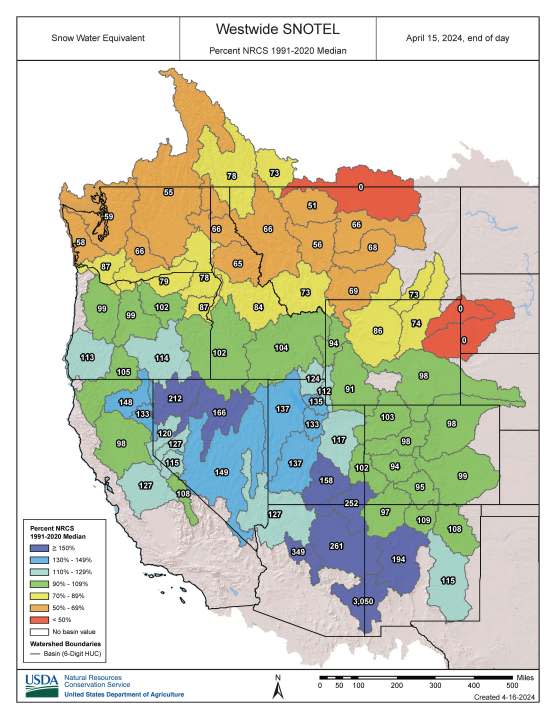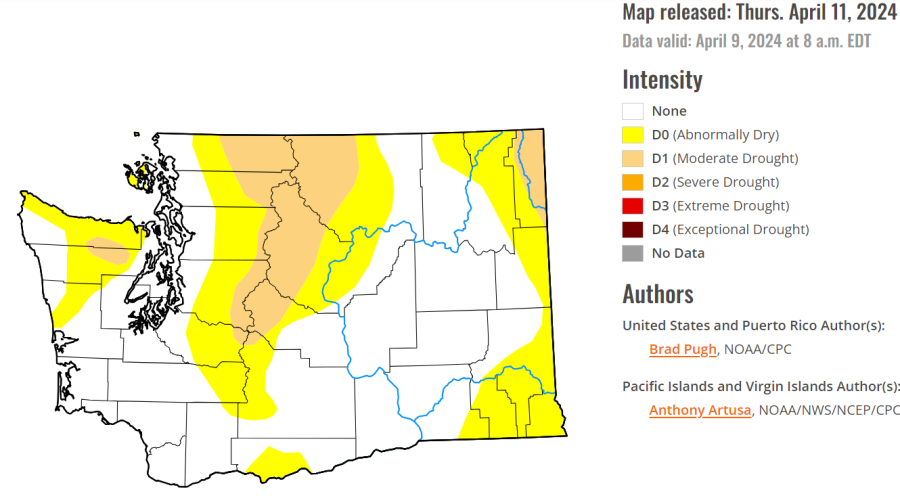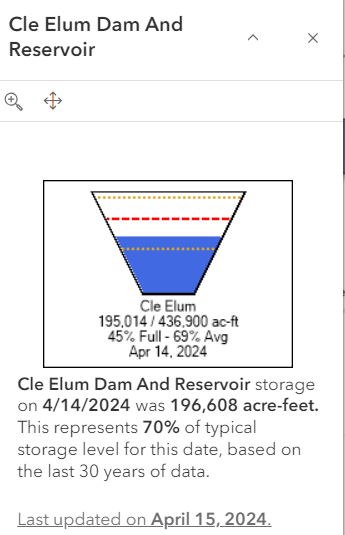Washington ‘snow drought’ causes wildfire concerns as summer approaches

PORTLAND, Ore. (KOIN) — An ongoing “snow drought” in parts of Washington, Northern Idaho, Western Montana and Northern Wyoming presents serious wildfire concerns with the warmer, summer months ahead.
In Washington, much of the state currently has a snowpack between 58 and 66% of its seasonal average. Oregon’s mountains, meanwhile, have maintained an average snowpack for the year.
Oregon state climatologist Larry O’Neill told KOIN 6 News that a dry winter snowpack can present a number of environmental and societal issues, including an increased chance of wildfires.
“Washington missed out on a lot of the bigger precipitation events, including having fewer atmospheric rivers than normal,” O’Neill said. “Because of the dry winter and poor snowpack, much of Washington can expect water supply issues throughout the summer. These adverse impacts include reduced agricultural and livestock producer yields due to dry soils and reduced supply of irrigation water, decreased hydropower generation, and increased wildfire risk, among others.”
Snow-water-equivalent data recorded for the Westen U.S. on April 16 and March 31, 2024. (U.S. Department of Agriculture.)
Frost continues to threaten parts of the Pacific Northwest
Although a dry winter was expected in the Pacific Northwest with the strong El Nino event that was present in the Pacific this past winter, O’Neill said that Washington’s meager snowpack is unprecedented. Despite the dry conditions in Washington, Oregon managed to avoid similar issues thanks to some unusual jet-stream behavior.
“The snowpack was much leaner and unlike any others we have experienced normally during either a strong or very strong El Nino winter,” he said. “What was unusual this year is that the jet stream diverted much of the moisture either far north into Alaska or south into California. Oregon was right in the middle but did benefit from the southward shift in the short track where we were fortunately clipped by storms going into California.”
Washington’s drought conditions as of April 9, 2024. (U.S. Drought Monitor) Water levels at Cle Elum Dam and Reservoir in Kittitas County on April 14, 2024. (Bureau of Reclamation)
NW Natural’s proposed 18% rate hike sparks public hearing
Washington is currently experiencing abnormally dry to moderate levels of drought, in terms of precipitation. These levels could worsen as the warmer months progress. In Eastern Washington, the Franklin Roosevelt Lake reservoir is currently flush with water. However, the Cle Elum Dam and Reservoir in Kittitas County, which holds water for irrigators in the Yakima River Basin, is 45% full and has been flagged by the Bureau of Reclamation for having the lowest observed water storage during this annual period.
Washington and other areas of the Northwest may be able to see some snow drought recovery if they receive wetter, colder spring conditions. However, O’Neill said that it’s unlikely.
“A wet and cool spring may mitigate some of these expected impacts, but our confidence is higher at this time of year to expect these adverse impacts given the dry conditions,” he said. Washington’s “large snowfall and snowpack deficits” date back to early February’s mid-winter snowmelt. The early snowmelt is expected to have a “strong, negative impact” on the spring and summer water supply and runoff, the National Integrated Drought Information System and the National Oceanic and Atmospheric Administration stated in March.
For the latest news, weather, sports, and streaming video, head to KOIN.com.





